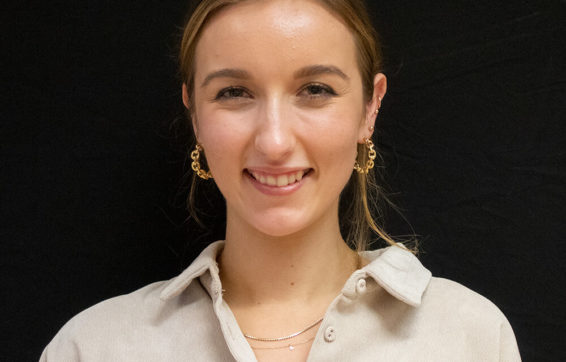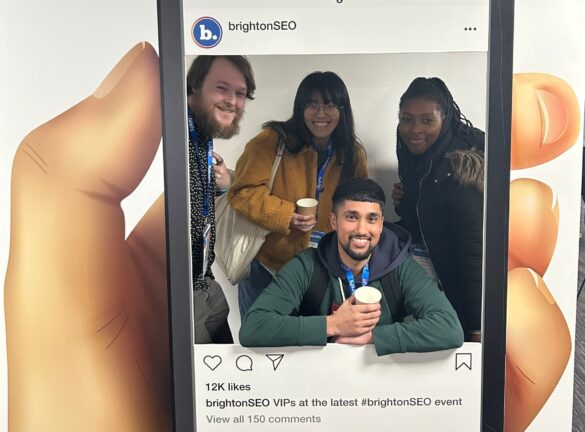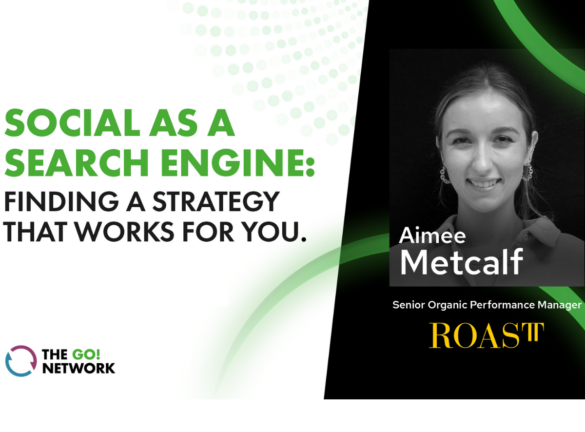
The Digital ROASTing with Snap
On Wednesday 9th June, The Digital ROASTing returned for another one-to-one quick-fire Q&A.
This time, our spotlight turned to Snap Inc, the innovative camera company with 280+ million daily active users around the world and a finger on the pulse of innovation. ROAST had the pleasure of welcoming Claire Valoti, VP EMEA at Snap (otherwise known as Snapchat) who leads growth and revenue across four continents, including key markets in Europe and MENA.
A video of the session is available to watch here, and the key points are summarised below:
John Barham: For any advertisers not currently considering it, could you tell us more about Snap and why advertisers should be using the platform?
Claire Valoti: We believe that in terms of take-up among advertisers, there is a gap between perception and reality. With the level of choice advertisers have and the fragmentation of the media landscape, often it’s easierfor many to focus on platforms they know.
Digging into the history of Snap is a great starting point to demonstrate its value. Snap’s founders wanted to create an antidote to social media and an effective way to communicate with what they termed ‘real friends’. On the platform we have no public comments and our default settings mean that you can only receive messages from people you’ve added as a friend, making it a different ecosystem.
Snap realised the importance of the camera: the app opens to the camera, as opposed to other platforms which feature newsfeeds, allowing the user to ‘Snap’ quickly. By choosing not to create a newsfeed, Snap also took a different approach in terms of content. Content is created through key partnerships including news and media outlets and we use algorithms to personalise the experience based on your interests rather than those of your friends.
The statistics demonstrate the success of the model: We now have 280 million daily active users in the UK: 90% of 30 to 24-year-olds and 70% 13-34-year-olds. While Snap’s audiences are also unduplicated. It’s a different community and a different kind of usage.
JB: What are Snap currently doing with augmented reality (AR), and what’s next for Snap in the next 6-12 months in terms of platform changes?
CV: Though you can buy media on Snap like other apps, we do refer to ourselves as a camera company and we do see ourselves as different. This is because we started as a communications company, with our camera as the enabler.
AR is a massive part of our innovation. In the early days, AR was used to invite people or take the barrier away from creation, most commonly seen through entertaining ‘filters’. What we learnt about our community was the power of AR, the reality has shifted from entertainment towards utility. AR Try-on, for instance, lets users try on everything from a pair of trainers to an entire outfit. At our latest Snap Partner Summit we announced a lot of exciting new try-on features including wrist tracking technology making it possible to try on timepieces; TrueSize technology for accessories such as sunglasses; new gesture recognition capabilities; voice-enabled controls; API enabled Lenses as well as new capabilities in Lens Studio which will improve try-on including 3D Body Mesh and Cloth Simulation.
We can see that for our clients, the physical and digital worlds are colliding at an increasing rate and we think the camera is at the heart of this connection. For retail brands, you can see where this is heading. Just as Snap revolutionised the camera experience on social media, we believe eCommerce will be revolutionised and Snap will be at the heart of it.
JB: In the last year, have Snap seen an uptake among brands and developers using the functionality?
CV: Yes, a good example is our recent partnership with Disney Parks, which created an AR experience for visitors. We’re having more of these conversations with brands who are looking to implement this groundbreaking tech into their businesses.
We’re also trying to make it easier for advertisers. We’ve created Lens Studio, which makes it easier to create AR and where you can partner with lens creators. Ultimately, we’re aiming to take the barrier of creation out of the scenario. We have the advantage of being ahead because usage is happening at such a scale that we understand how our users want to use the camera and what they use AR for.
JB: Aside from the obvious verticals, there might be reticence among less demographically relevant sectors to advertise on Snap. At the same time, however, there are multiple routes for brands to start engaging with Snap. What has been the best route for brands starting heir advertising journey on Snap?
CV: It will depend on what they are trying to achieve. There are brands that enter through AR, but many enter through formats they are using on other platforms. Creativity is critical. Without scrolling feeds, ads stand out. Therefore the impact of creativity can make or break an ad.
On demographics, we do believe that our audience does continue to age up but more importantly, that our audience is shaping what the future will look like. The question is: does your brand want to come on that journey and get ahead?
In terms of performance, Snap’s seen a lot of activity across FinTech, Gambling, Gaming and growing industries such as Teeth Whitening. These are industries adept at hardcore performance marketing and as a result, we see a lot of activity across not just AR but also a lot of traditional performance marketing activity.
JB: In the last year there has been a lot of change, have you seen a shift in usage of the platform by consumers or in advertiser’s behaviour?
CV: Starting with usage, of course, people wanted to communicate with their friends during the lockdown, and as a result, we saw a 50% increase in video calling. We’re optimistic that though our community has been engaged during COVID, Snap will come to life to a greater extent when our users are out in the world doing interesting things. We will continue to see that growth increase but are privileged to have played a key role in enabling people to communicate during the lockdown.
Turning to advertisers, it’s been undeniably tough for a lot of businesses, and as a result, hyper-rational advertisers have become even more hyper-rational. We’ve tried to support by really listening to advertisers key challenges, and by monitoring how metrics are shifting.
JB: Moving to the post-covid world, what are Snap’s plans?
CV: We’re trying to predict how people are going to feel and we’ve sent round surveys to get our staff’s input on future plans. Understandably, however, we won’t know until life goes back to real normality which makes planning difficult.
Many positives have emerged from this period: we’ve realised the upside of working from home models in terms of increased productivity in some cases, while it’s also made us more democratised as a global organisation, with everyone so easily connected over video chat.
However, I do think it’s changing the role of the office. At Snap we see the office as a key environment for collaboration, especially for people starting out in the industry. We must not devalue social interactions, building trust with colleagues and making these connections is critical for decision making, I don’t think you can do this through video.
If you enjoyed reading through this insight into the future of advertising with Snap, why don’t you take a look here at The Digital ROASTing with Google.
Or keep up to date with our upcoming events here.






